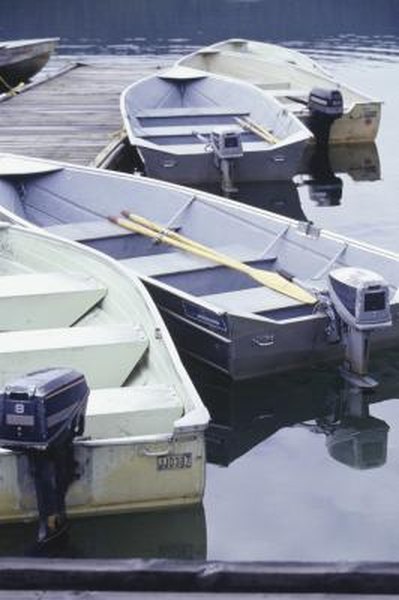
Whether you want to ensure your boat's engine block is sound after a long, hard winter or you're purchasing a used boat engine, you should check for a cracked engine block. The process can be messy, but it is straightforward in nature. You'll need to replace part of the engine's oil, something to keep in mind if you're planning a purchase or even if you don't seal the deal.
Items you will need
Screwdriver
Clean 1-quart container
Step 1
Locate the engine’s oil drain. On an outboard, the oil drain usually is on the rear or side of the engine's lower cowling, around the bottom part of the engine. If the drain is not visible outside the lower cowling, use a screwdriver to remove the screws holding the cowling in place and take off the cowling. On inboard and inboard-outboard boats, the oil drain is at the bottom of the oil pan.
Step 2
Hold a clean 1-quart container below the oil drain. Open the oil drain and allow about a pint of oil to drain into the container.
Step 3
Inspect the oil visually for cloudiness, a clear indicator of water in the oil and of a cracked engine block. Feel the oil for bits of metal, also a clear indication of internal damage.
Step 4
Watch for white smoke coming from the engine during operation. Odd sounds or flying bits of metal are another clear indicator of a cracked block; look for these signs while the engine is running.
References
- Evinrude Repair Manual -- 2.5- to 250-Horsepower Models, 2002-2007; Seloc Marine; 2007
Writer Bio
Will Charpentier is a writer who specializes in boating and maritime subjects. A retired ship captain, Charpentier holds a doctorate in applied ocean science and engineering. He is also a certified marine technician and the author of a popular text on writing local history.


